The celebration of Koliady
At all times the major winter fest was considered to be Kaliadi. Earlier this festivity symbolized the beginning of the New Year: both agricultural and solar. People celebrated Koliadi fr om the 6th till the 19th of January AD.
For this as well as the other festivities, people prepared in advance: they slaughtered a pig (peasants, especially poor ones ate meat very rarely and this fest was one of those periods when they could eat plenty of it) they gave their houses a proper clear-out, prepared new beautiful outfits and went to a bathhouse in order to wash themselves properly and celebrate this fest neat and tidy.
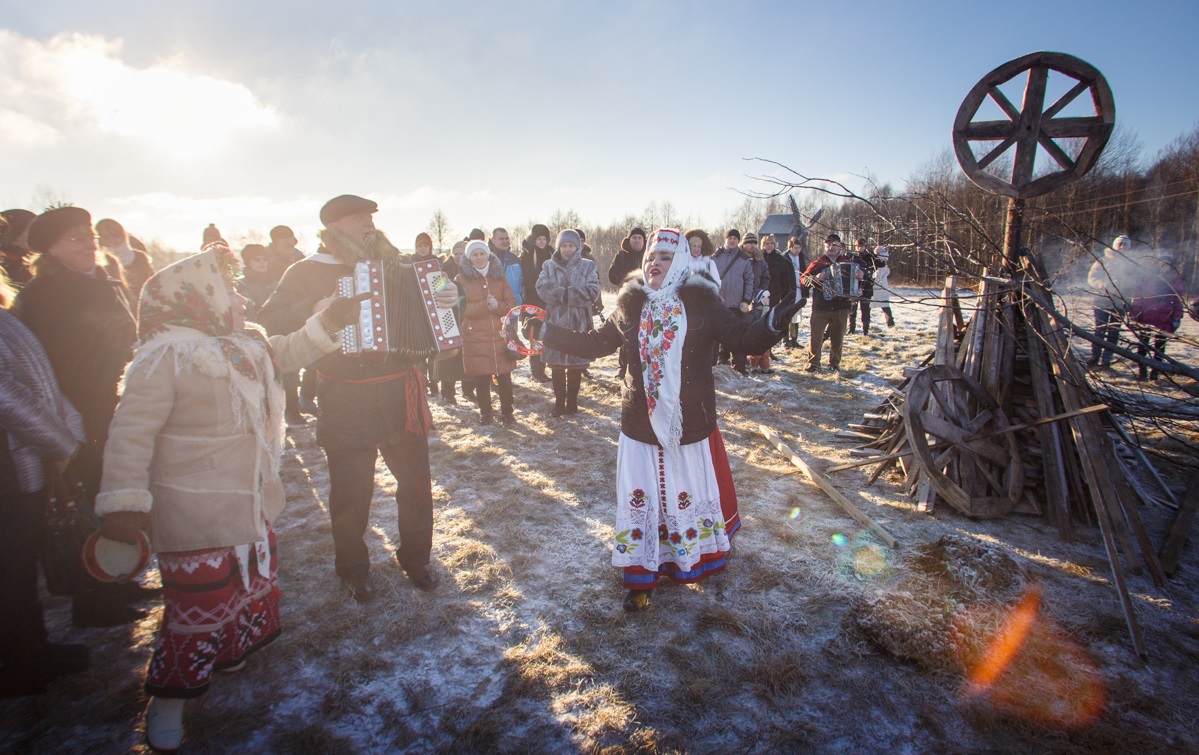
Spring fest "Maslenitza"
One of the most ancient Slavic festivals is Maslenitza. This fest has never been marked in the calendar, because it has no definite date, but it is usually celebrated eight weeks before Easter. One week after Maslenitza starts Lent. Church calendar mentions this fest as “The cheese-fare week”. Peasants treated this event with respect and prepared for it beforehand. At this period there should be plenty of dairy products on the table, while to eat meat was strictly forbidden.
This fest traces its roots back to pagan times and is connected with winter farewell. During Maslenitza celebration one should have fun, rejoice over the end of the winter and spring coming. As a rule there is a big scarecrow of Maslenitza that embodies winter, which then is burnt in the fire. Pancake is a traditional dish of Belarus that one certainly should try during this fest.
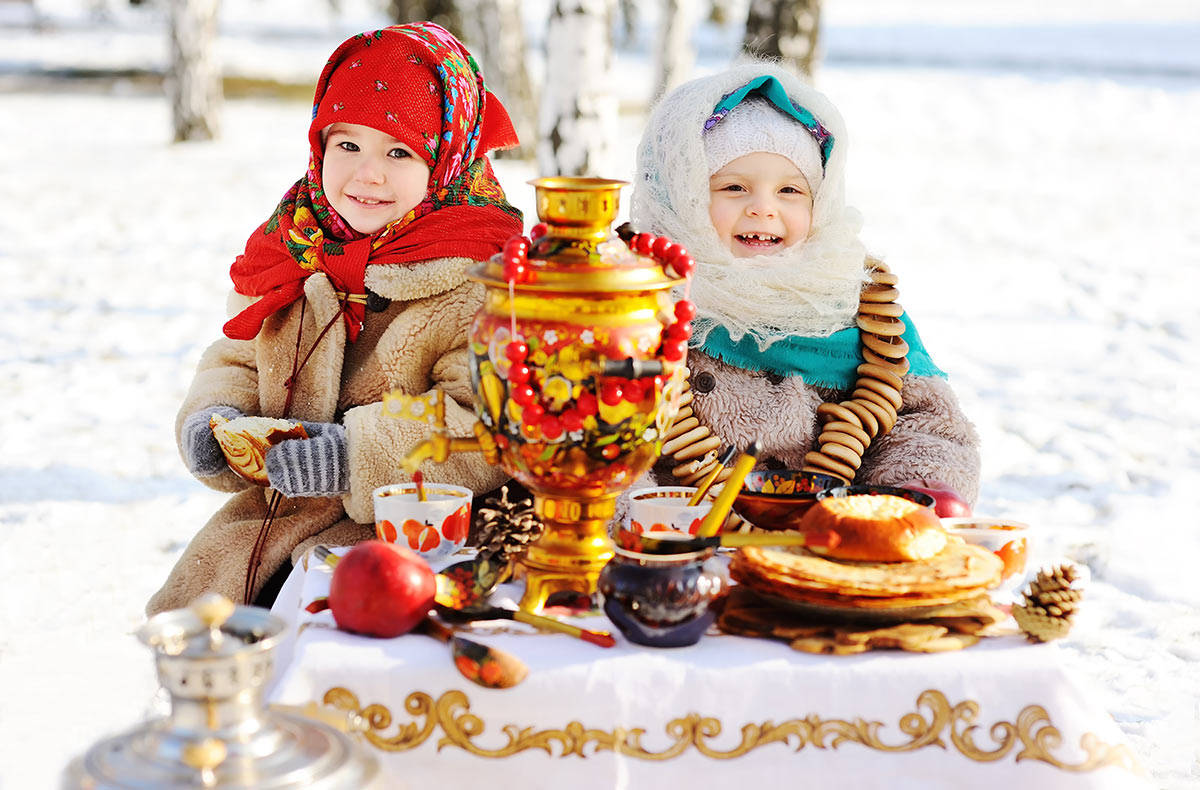
Kupala Night
People say that on the night of 6 July 7 animals and trees could talk to each other. For many centuries this night is magical. This is called a midsummer night or the night of Ivan Kupala. This celebration is traditional, not only for Belarus. It is celebrated in the Ukraine, the Baltics, Russia.
There was once a Slavic pagan god of fertility - Kupala. With the advent of Christianity in Belarusian lands in this day began to celebrate the feast of St. John the Baptist. Over time, the people of the two names merged into one and the holiday became known as Ivan Kupala, or Midsummer.
This night will be today. I've already talked a bit about this holiday, and now (1 hour) in the park of my city to start a holiday. I have a little time to tell you that the Belarusians do in the evening and night.
Unmarried girls are weaving wreaths and keep them on the water. If the wreath drift away far away, the girl this year, will get married. If the wreath will sail back to shore, then the marriage will not be. And if you drown a wreath, it is a bad sign.
Another tradition is the kindling of a large fire. Then, when the fire burned, a boy and a girl will take up arms and will jump over the fire. It is believed that this is a very good sign and it is fortunately. By the way, it is necessary to put the wheel into the fire. Burning wood wheel - it is a symbol of the god Kupala.
Late in the evening or at night the young people will go to the park or the woods to look for fern flower. Everyone knows that ferns do not bloom, but there is a legend. As it is the man who finds a fern flower will be able to understand the language of birds and animals, he knew where all the buried treasures in the world. It is not surprising that until now many people are looking for a magic flower.
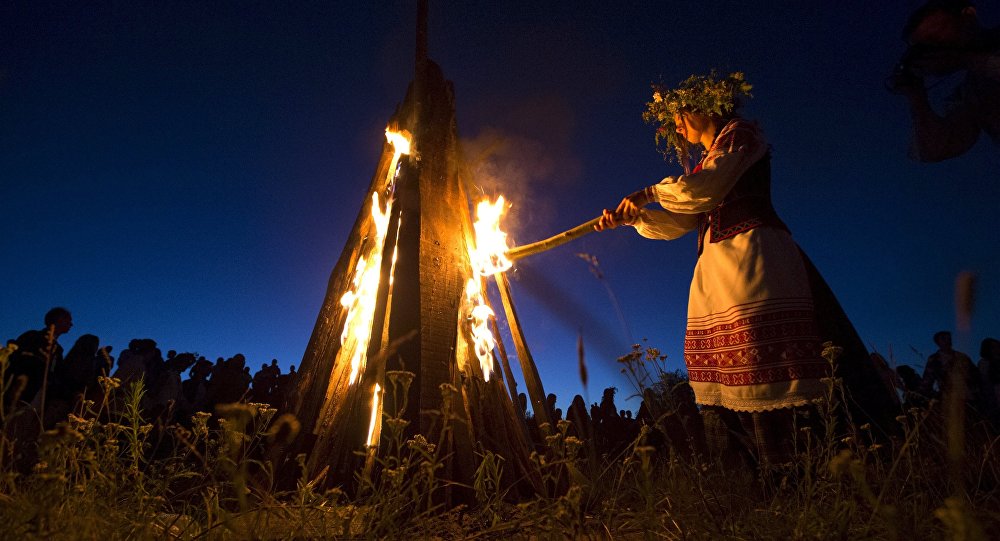
Dozhinki
Dozhinki, harvest fest, is celebrated broadly nowadays, with a great amount of entertaining activities, agricultural products selling out and the best farmer’s work indicating. A large number of people come to this fest to take part in its celebration, eat delicious Belarusian food and relax.
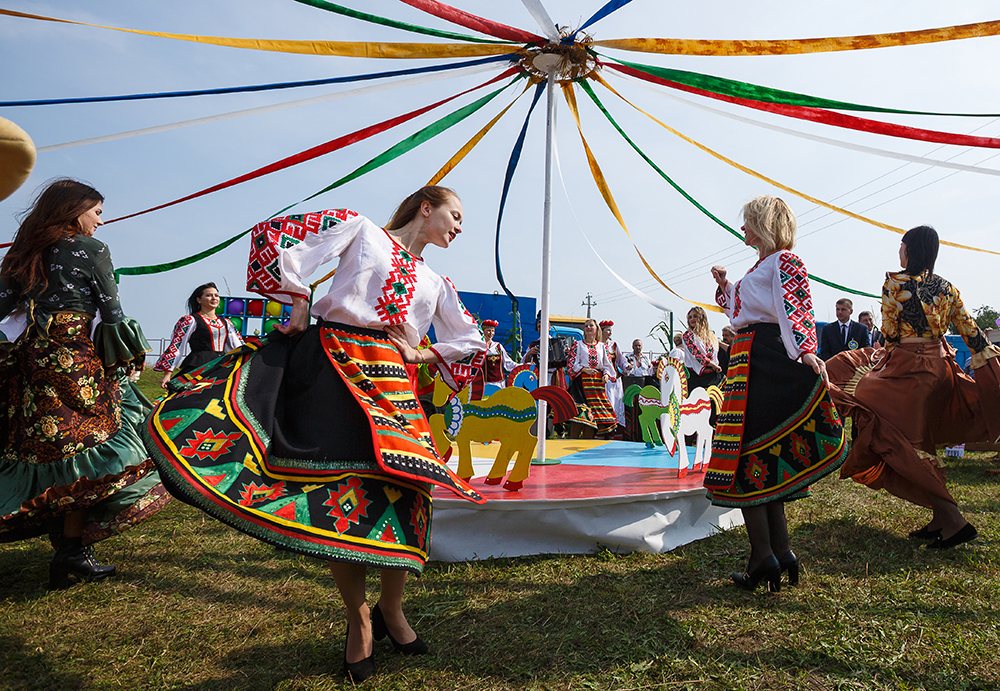
The White Caste
The Belarusian people are proud of the country's past and its traditional culture. The medieval festival "The White Caste" is arranged every spring in Minsk. The spectators can admire performances in costume, combats of knights and ancient music. Every summer, in Belarusian castles (in Lida, Mir, Novogrudok. Nesvizh, etc.) knights' tournaments and international medieval festivals take place. They attract spectators and participants from many countries of the world. During several days, you will have a chance to plunge into a romantic atmosphere of the Middle Ages, to contemplate a reconstruction of historic events, to become an apprentice of a craftsman, enjoy medieval music and »v on knights' armor or ladies' magnificent dresses.

Wedding ceremony
The brightest Belarusian ceremonial events is wedding. On such important occasions, as a rule the whole family gathers together, including close and distant relatives and the variety of dishes are served.
Ceremony that possesses a deep sense is a Belarusian wedding. Wedding has always been thoroughly thought out and planned, all its stages were carefully checked over. Modern wedding doesn’t possess such a deep sense, though till nowadays, the majority of newly wedded doesn’t dismiss the ancestor’s traditions.
Wedding ceremony had a definite sequence, consisting of three stages:
- (‘zapity’, marriage brokerage, engagement),
- wedding (actual celebration),
- post marital period (pies and honeymoon).
Even today fiancé with his family go to bride’s place to get acquainted with her family. It is called ‘svati’. Also it is popular to organize theatre bride price and a pretend bridal kidnapping is a favorite entertainment of the bridesmaids.

Traditional costume
Though Belarus is not such a big country there are 22 variants of the national costume. Regional differences are mainly in the small details of the costume and in motives and subjects of ornament.
Garments for the women include a chemise (kashulya) made of homespun linen; a heavy pleated checked or striped woven wool or linen skirt (spadnitsa or andarak); a linen homespun apron, and a waistcoat. Sleeves, shoulder insets, collar and bosom have embroidered patterns in red and black yarn, the composition of ornamenting depending on the region where the set belongs. The apron has colouring and ornamenting similar to those of the gown. The waistcoat being a festive attire was made of industrially manufactured textiles such as silk and velvet. The obligatory part of every costume is multi-color belt with pompons, tassels or fringes.
On their head young girls would wear coronets and narrow head-towels (skindochka), while married women wore bonnets and hoods. Still more women prefered namitkas head-towels which could be skilfully draped in many ways. Strings of beads complete the costume.
Men's costume include a linen shirt worn over the trousers, a waist-band and a pair of narrow trousers. The shirt has a bosom cut and a turn down collar. In certain regions a waist coat (kamiselka) is worn over it. A leather hand-bag called calita is a part of the garment too. The head-dress is a simple straw hat.
Symbolism of the costume's embroidery is ancient. White, the colour of homespun linen, is the colour of heaven; red is the colour of the sun and earth and is protective of life; black is the colour of the underworld and spiritual life.
The costume's different parts represent three spheres: neck, shoulders and sleeves represent the higher world; the waist - the earth; and the hem - the underworld. Different shapes of ornament are supposed to ward off evil. For example, the hands of working women were protected from spells and bad spirits by decoration of their sleeves with the bright red rhombic ornaments that is believed to have magical powers.
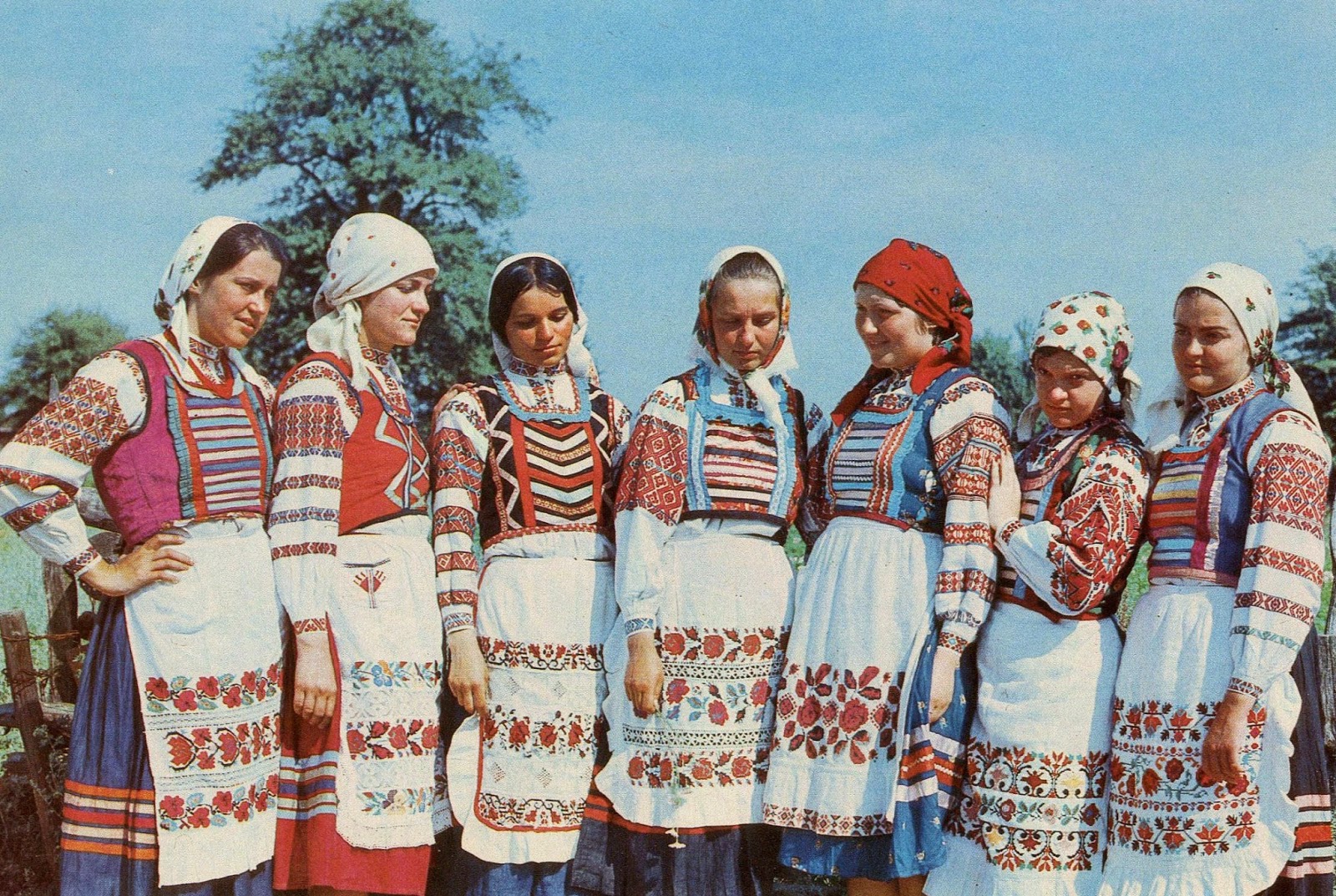
Rushnyk
Rushnik is a ritual cloth embroidered with symbols and cryptograms of the ancient world. They have been used in sacred Eastern Slavic rituals, religious services and ceremonial events such as weddings and funerals. Each region has its own designs and patterns with hidden meaning, passed down from generation to generation and studied by ethnographers.
There are many rushnyk collections in ethnographic museums.
The rectangular shape of the fabric indicates a life's journey and the ornamentation captures the cultural ancestral memory of the region. The material used is either linen or hemp. The act of spinning thread and the process of weaving linen embodies spiritual power dating back to the ancient deity Mokosh who is often represented in embroidery. The needle has its own energy, an idea similar to acupuncture, and the color of the thread has sacred meaning. Red represents life and is the main color used. A rushnyk is given to a baby at birth, it follows the person throughout life and used in the funeral service after death.

Christmas
Prior to Christianity, the darkest period of the year was associated with the winter solstice, and two weeks were set aside for this time, called Kaliady. Belarus remembers its roots, though Christianity (or atheism) has replaced paganism. Those who are members of the Orthodox Church celebrate Christmas on January 7, while Protestants and Catholics celebrate on December 25.
Customs for Kućcia, or Christmas Eve, are similar to those in neighboring countries. The table may be spread with hay before the tablecloth is draped over it, reminiscent of the hay that padded the manger where Jesus was born. Traditionally, the Christmas Eve dinner is served without meat and consists of at least 12 fish, mushroom, and vegetable dishes. The number twelve signifies the 12 Apostles. Bread is broken between family members rather than cut with a knife, and after the dinner is eaten, the table remains as it is so that ancestral spirits may partake of the meal at night.
Caroling is also a part of Belarus Christmas traditions. As in other countries, this tradition has its roots in older, pagan traditions, when troupes of carolers would dress up like animals and fantastic beasts to scare away evil spirits and collect money or food in return for their services. Today, usually only children go caroling, though now even that is not so common.

Slutsk Belts
The famous Slutsk belts are among Belarus’ national treasures, a fine example of decorative and applied art. They have become not only a historic and cultural symbol but also a modern brand of Belarus.
Only noblemen could afford wearing these exceptionally beautiful, symbolic and expensive belts. They were woven in Belarus since the 18th century. Amazing events and family secrets, mysterious and sometimes mystical stories are connected with them.
Today the original Slutsk belts are a rarity: Belarus has very few of these belts. A large part of them is kept in museum and private collections around the world.
However, Belarus has revived the unique traditions of making the Slutsk belts. Modern artists make their exact copies, analogues and artistic stylized designs, which can make an exclusive souvenir from Belarus.
